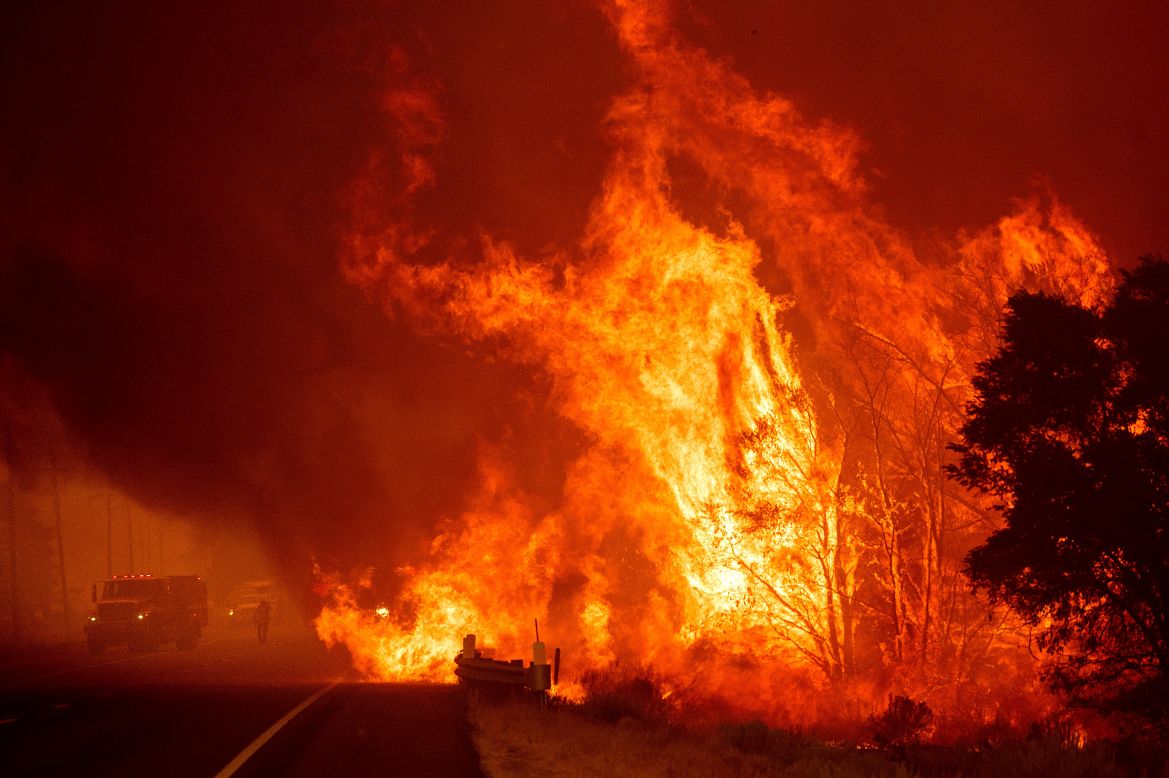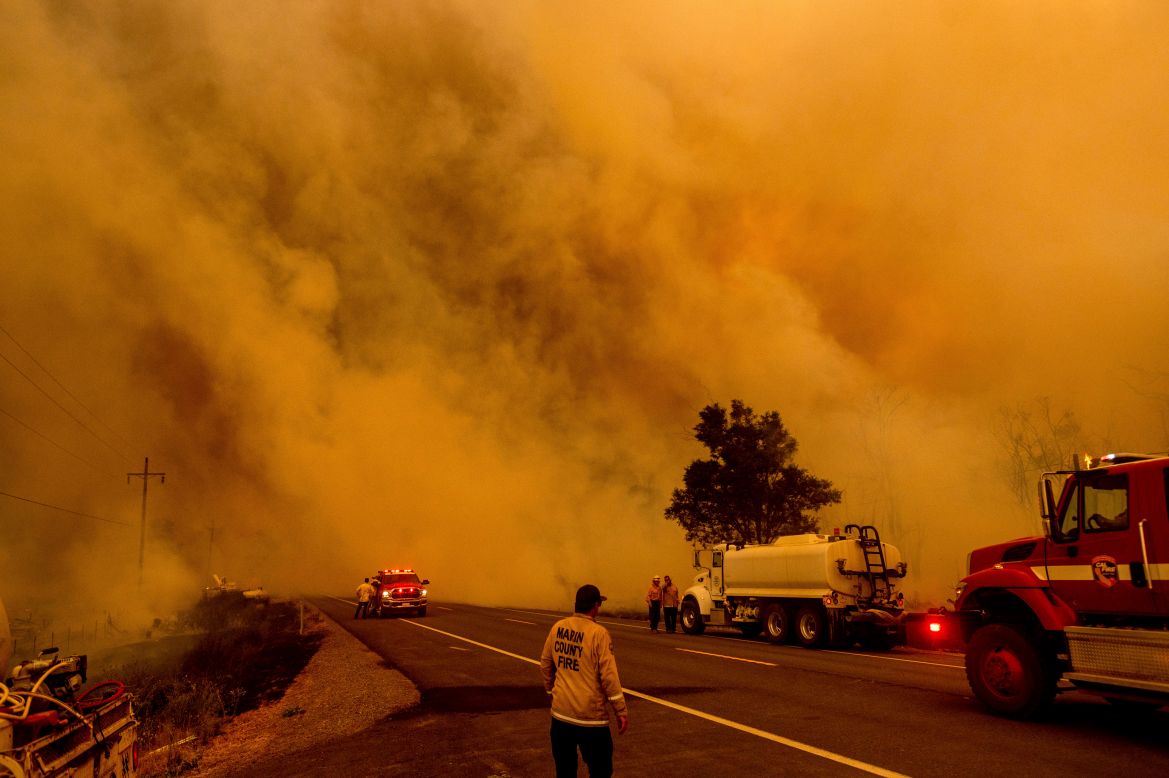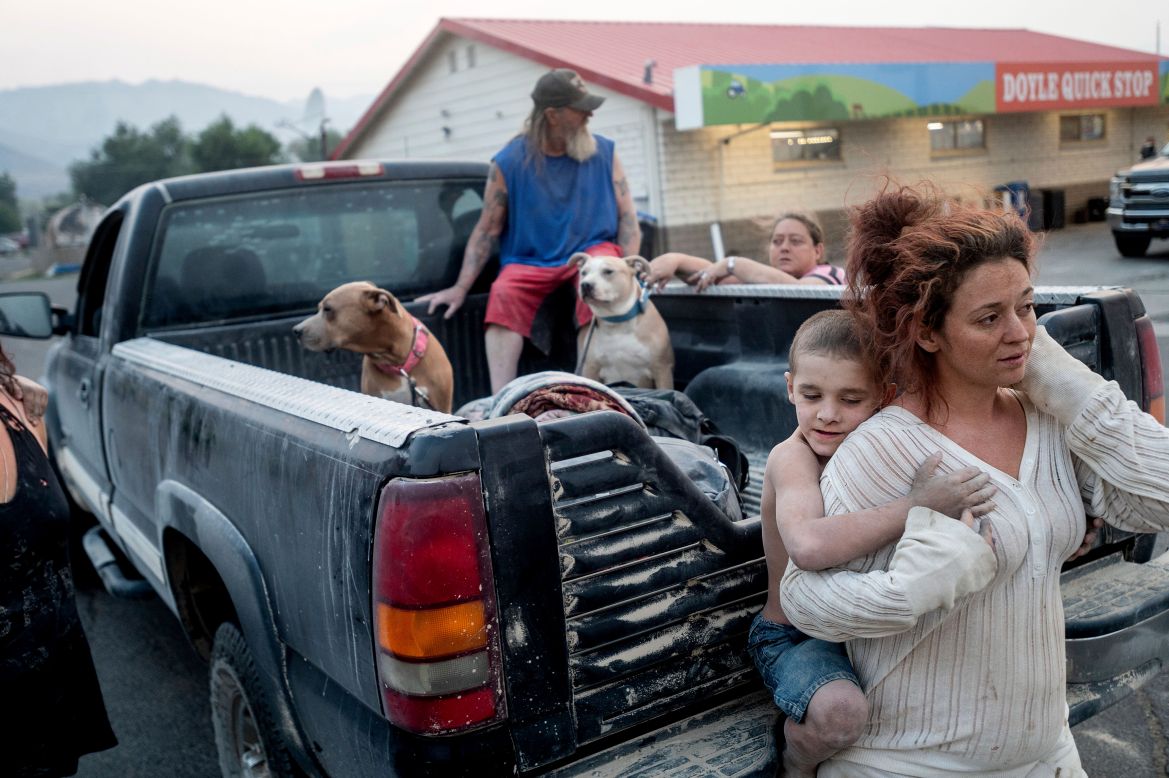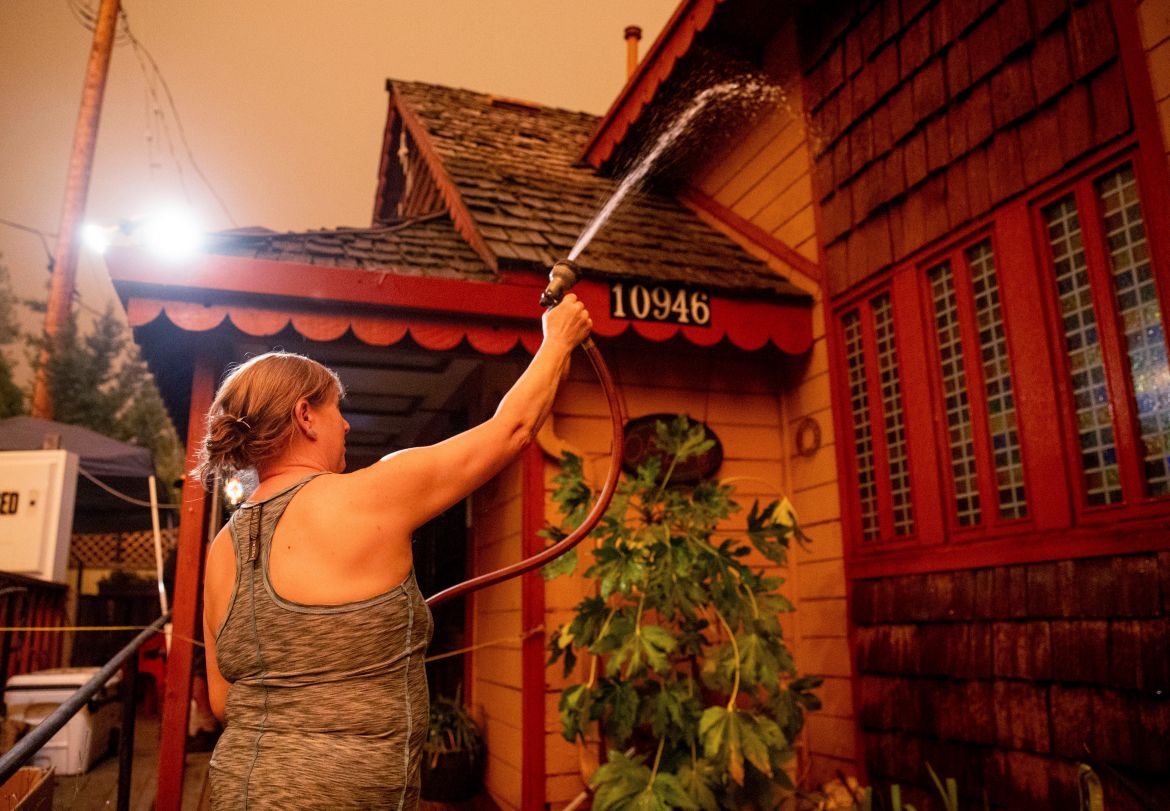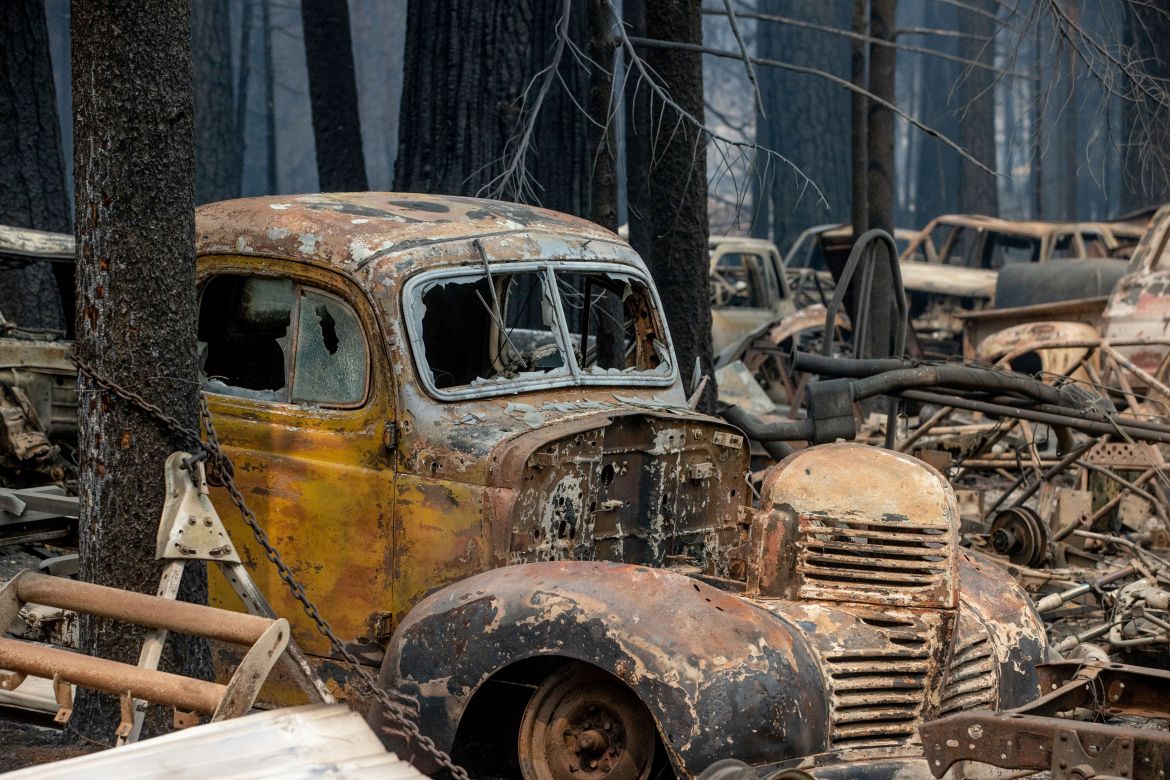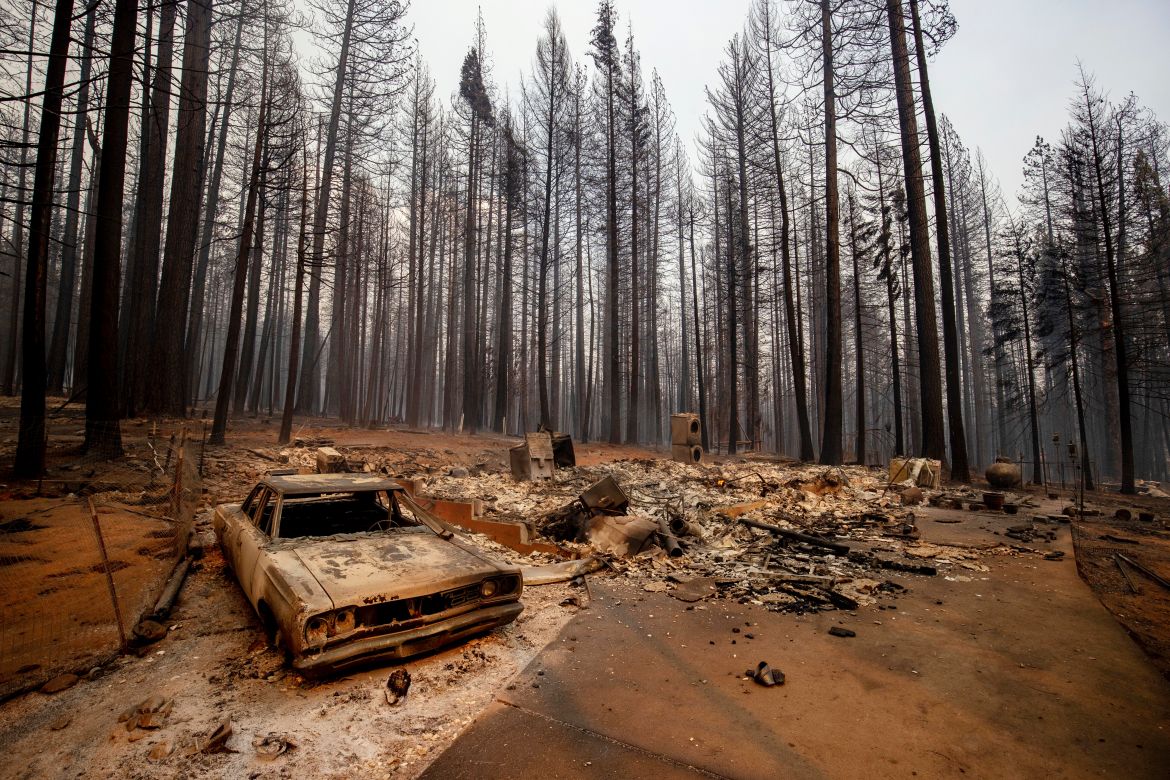In Pictures
Devastating wildfires scorch northern California
The Dixie Fire is the largest of nearly 100 major wildfires burning across a dozen western US states, including Alaska.
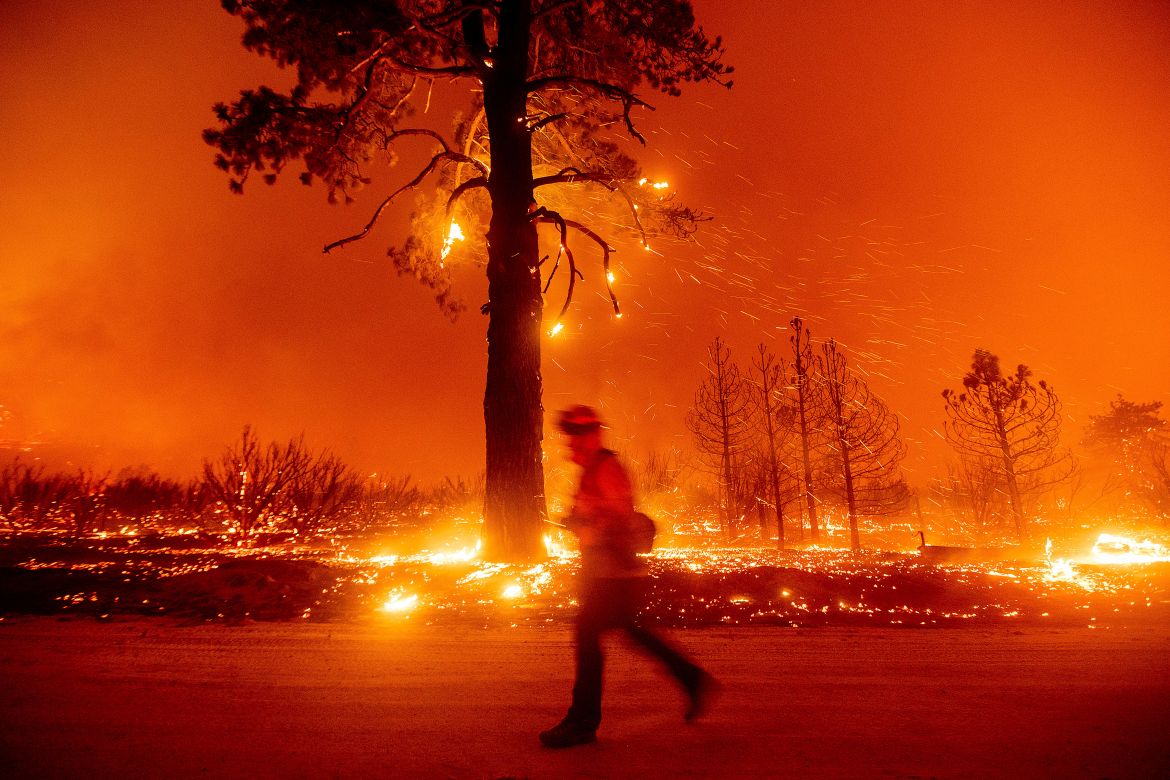
Northern California wildfires that have incinerated two mountain communities continue marching through the Sierra Nevada range while a utility company purposely blacked out as many as 51,000 customers to prevent new blazes.
Two weeks after the Dixie Fire destroyed most of the Gold Rush-era town of Greenville, the Caldor Fire a few miles southeast exploded through tinder-dry trees and ravaged Grizzly Flats, a forest community of around 1,200 people.
Fire officials on Wednesday estimated that at least 50 homes had burned in the area since the fire erupted on Saturday and two people were hospitalised with serious injuries.
Governor Gavin Newsom proclaimed a state of emergency in El Dorado County, where authorities were considering closing the entire El Dorado National Forest.
Both fires grew by tens of thousands of acres from Monday afternoon through Tuesday, torching trees and burning up brush left tinder-dry by high temperatures, low humidity and drought. Afternoon gusts drove the flames.
Few homes were left standing in Grizzly Flats, where streets were littered with downed power lines and poles. Houses were reduced to smouldering ash and twisted metal with only chimneys rising above the ruins. A post office and elementary school were also destroyed.
At the Dixie Fire, numerous resources were put into the Susanville area, a city of about 18,000 a few miles from the northeastern edge of the blaze. Residents were warned to be ready to evacuate.
Late on Tuesday, Pacific Gas and Electric said it had begun shutting off power to as many as 51,000 customers in 18 Northern California counties to prevent wildfires for the first time since last year’s historically bad fire season.
The nation’s largest utility company announced the blackouts as a precaution to prevent gusts from damaging power lines and sparking blazes.
The Dixie Fire is the largest of nearly 100 major wildfires burning across a dozen western US states, including Alaska. The wildfires, in large part, have been fuelled by high temperatures, strong winds and dry weather.
Climate change has made the western United States warmer and drier in the past 30 years and will continue to make the weather more extreme and wildfires more destructive, according to scientists.
